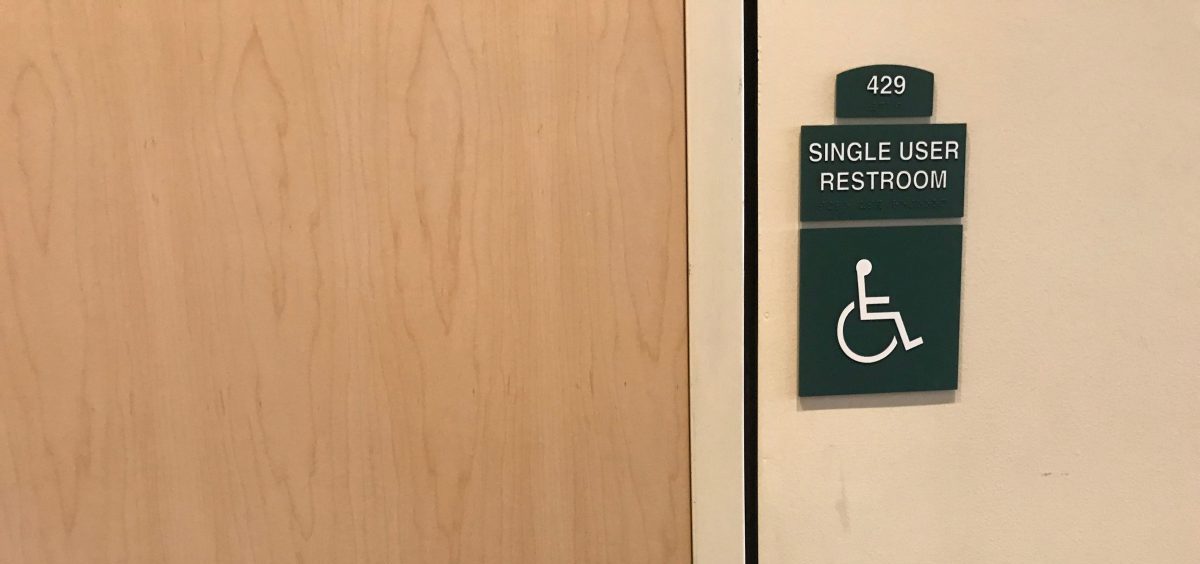
Single-User v. Multi-User Bathrooms: The Ongoing Battle
By: Kay Jurma, Shae Schirtzinger
Posted on:
Everybody has to use the bathroom. In recent years, Trans people have been in the center of conversations about bathrooms. News stories have covered topics ranging from school policies to state regulations. Ohio University recognizes that students sometimes struggle when determining where to go.
Every time Rae Main has to enter a public bathroom… it’s a challenge. “You just feel out of place, rather than included. Because you’re going to this bathroom specifically made for you, and it’s just like, ‘oh, here I am’ or I could go into the quote unquote normal bathroom.” Rae says.
That’s because Rae identifies as gender non-binary which means they don’t feel like a boy or a girl, so they use they/them pronouns.
Rae’s feelings about bathrooms are pretty common among people who identify as non-binary or trans. The debate over where we do our business has become the newest battle front in the cultural war.
Here at Ohio University, after trans students voiced their needs for gender-neutral public restroom university administrators decided they needed to study the issue.
Dianne Bouvier, the Director for Equal Opportunity and Accessibility, had this to say. “So I formed a committee, because that’s what you do. So I brought in the designers, and the architectes, and the, um, faculty, there was some faculty women, gender… women, gender and sexuality studies it became, and then, um… and the LGBT Center, so, and ADA. So we had all of these different people and different interests.”
In 2016, the committee sent a survey to all staff and students at all of the Ohio University campuses and those answers helped the committee come up with a concept of more inclusive bathrooms under an idea called universal design.
“So you design a space with the intention of meeting the needs of as many people as possible,” Dianne continued.
Using the universal design concept, the university decided to name the new inclusive bathrooms single user bathrooms… meaning people with children, the elderly, and people with assistance, not just gender non-conforming and trans students can use the bathroom.
A full list of all the single-user, gender-neutral restrooms can be found online on the LGBT Center website and a continuously updated list of accessible spots can be found on the equity and accessibility web page.
But not all students find these inclusive options comfortable. Rae says they find single-user bathrooms isolating and would rather have a different option.
Rae didn’t agree, saying, “Making more gender-neutral bathrooms, and making them multiple-user rather than single-user. It would be nice to, like, have a bathroom that I, like, don’t feel… awkward in.”
But what Rae might not find awkward, someone else might. And that’s the tension with inclusion — how do you create inclusive spaces when we all have so many different needs and perspectives…How do you make sure everyone feels included equally, it’s complicated. It’s messy.
Dianne said, “I don’t know what the solution is. I think if there people who were really interested in it we’d look into it, but at this point nobody’s really come forward saying “we want this”. So we haven’t… My goal is that we should make decisions around the campus that really make it easy for people to do what they need to do. If we haven’t figured out a solution, then it’s good to let us know.”
While Dianne doesn’t have a clear answer, she knows you have to keep trying.

